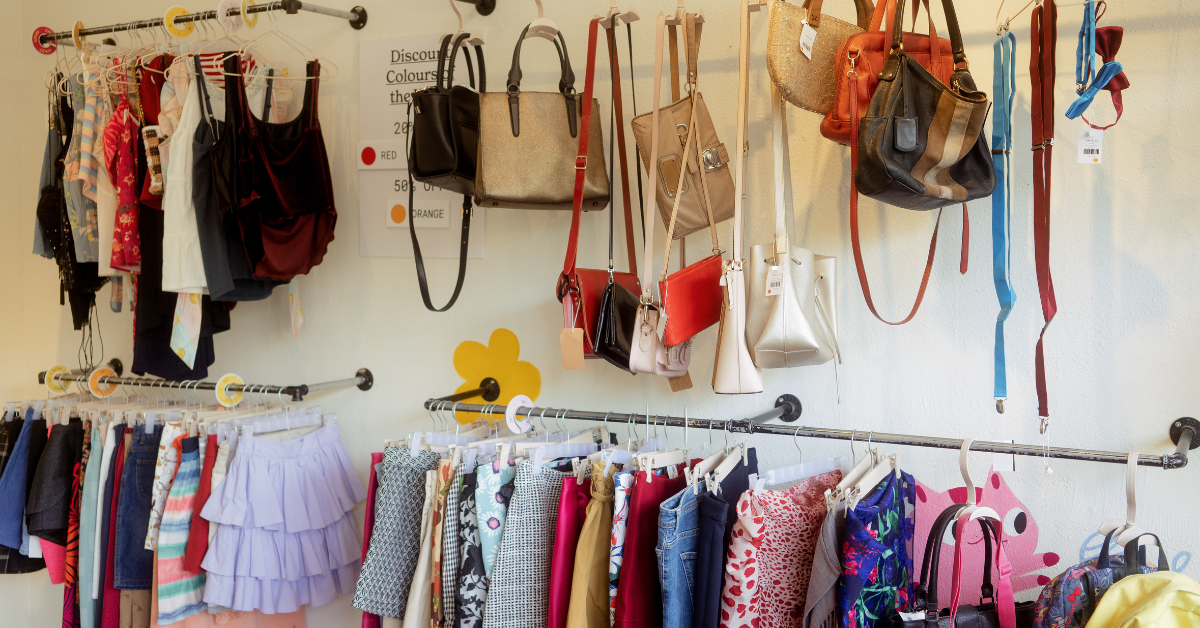How Thrifting is Saving the Planet

The History of Thrifting
Thrifting has a long and storied history that dates back to the early 20th century. During times of economic hardship, people sought out secondhand goods as a practical and cost-effective way to meet their needs. Over the years, thrifting evolved from a necessity to a cultural phenomenon, with a growing appreciation for the unique and the unexpected.
The rise of vintage fashion, the increasing awareness of sustainability, and the surge in DIY and upcycling projects have all contributed to the surge in thrifting’s popularity. Today, thrifting is not just a way to save money, but a lifestyle choice that celebrates individuality, creativity, and environmental consciousness.
Benefits of Thrifting
Thrifting offers a multitude of benefits that extend far beyond the financial aspect. Here are some of the key advantages of embracing the thrifting lifestyle:
- Cost Savings: Thrifting allows you to find high-quality items at a fraction of their retail price, helping you save significant amounts of money on your purchases.
- Sustainability: By giving new life to pre-owned items, thrifting reduces waste and supports a more sustainable approach to consumption.
- Unique Finds: Thrift stores are treasure troves of one-of-a-kind items, allowing you to discover rare, vintage, or custom-made pieces that you won’t find in mainstream stores.
- Creativity and DIY Inspiration: Thrifted items can serve as the perfect canvas for your DIY projects, inspiring you to unleash your creativity and transform ordinary objects into extraordinary creations.
- Environmental Impact: Thrifting reduces the demand for new products, which in turn reduces the environmental impact of manufacturing and resource extraction.
- Community Engagement: Thrifting often involves exploring local thrift stores and supporting charitable organizations, fostering a sense of community and social responsibility.
Also read: The Ultimate Guide to Zero Waste Living: How to Minimize Waste and Maximize Sustainability
Thrifting Tips for Beginners
If you’re new to the world of thrifting, the prospect of navigating through racks of used items can be daunting. Fear not! Here are some essential tips to help you get started:
- Have a Plan: Before you set foot in a thrift store, take some time to identify your specific needs or interests. This will help you focus your search and avoid getting overwhelmed by the sheer volume of options.
- Inspect Carefully: Thoroughly inspect each item for any signs of damage, wear, or defects. This will help you make informed purchasing decisions and ensure you’re getting the best value for your money.
- Be Patient and Persistent: Thrifting is all about the thrill of the hunt. Don’t get discouraged if you don’t find what you’re looking for right away. Keep exploring and be open to unexpected discoveries.
- Embrace the Thrill of the Hunt: Approach thrifting with a sense of adventure and excitement. The joy of uncovering hidden treasures is what makes the experience so rewarding.
- Know Your Limits: Set a budget and stick to it. It’s easy to get carried away by the abundance of tempting finds, so be mindful of your spending.
How to Find the Best Thrift Stores in Your Area

Locating the best thrift stores in your area is the first step to unlocking a world of hidden treasures. Here are some tips to help you identify the thrift store gems:
- Utilize Online Resources: Search for local thrift stores and charity shops in your area using online directories and review sites. This will give you a good starting point to plan your thrifting adventures.
- Ask for Recommendations: Reach out to friends, family, or local community groups for recommendations on the best thrift stores in your neighborhood. Word-of-mouth can be a valuable source of information.
- Explore Different Neighborhoods: Don’t limit your search to just one area. Venture out and explore thrift stores in different neighborhoods, as they may offer unique and diverse inventories.
- Check Charity Organization Websites: Many charitable organizations, such as Goodwill, Salvation Army, and local nonprofits, operate thrift stores. Visit their websites to find the nearest locations.
- Be Willing to Venture Off the Beaten Path: Some of the most remarkable thrift store finds can be discovered in unexpected places, so don’t be afraid to explore lesser-known or out-of-the-way locations.
The Art of Thrifting: How to Spot Hidden Treasures
Mastering the art of thrifting is all about developing a keen eye for the unexpected. Here are some tips to help you identify hidden treasures among the sea of secondhand items:
- Look Beyond the Surface: Don’t judge an item solely by its current condition. Imagine the potential it holds and how it can be transformed through cleaning, repairs, or a creative touch.
- Pay Attention to Quality and Craftsmanship: Seek out well-made, high-quality items that may have been overlooked by other shoppers. These hidden gems often hold significant value.
- Research Brands and Labels: Familiarize yourself with the brands and labels that are known for quality and collectibility. This knowledge can help you spot valuable finds.
- Embrace Vintage and Antique Items: Vintage and antique items can be true hidden treasures, offering a glimpse into the past and the potential for unique and timeless style.
- Trust Your Instincts: If an item catches your eye and sparks your interest, don’t hesitate to explore it further. Your intuition can be a powerful tool in the world of thrifting.
Thrifting for Unique Clothing Finds
Thrifting for clothing is a true art form, allowing you to uncover one-of-a-kind pieces that will set your style apart. Here’s how to navigate the world of thrifted fashion:
- Identify High-Quality Fabrics: Look for natural fibers like cotton, wool, and silk, as they tend to be more durable and versatile than synthetic materials.
- Seek Out Vintage Gems: Vintage clothing can be a treasure trove of unique designs, superior craftsmanship, and timeless appeal. Explore the racks with an open mind and a keen eye.
- Assess Fit and Tailoring: Pay attention to the fit and tailoring of garments, as these can be easily altered to suit your body shape and personal style.
- Explore Unexpected Pieces: Don’t be afraid to venture beyond the typical clothing categories. Thrift stores often have hidden gems in the form of accessories, outerwear, or even formal wear.
- Embrace the Thrill of Transformation: Thrifted clothing can serve as a blank canvas for your creative expression. Experiment with DIY projects, upcycling, and personalization to transform ordinary items into extraordinary outfits.
Thrifting for Home Decor and Furniture
Thrifting for home decor and furniture can be a game-changer, allowing you to create a unique and personalized living space on a budget. Here’s how to uncover hidden treasures for your home:
- Look for Solid Construction: When it comes to furniture, focus on pieces with sturdy, well-built frames that can withstand the test of time.
- Envision the Possibilities: Don’t be deterred by the current condition of an item. Imagine how it could be refinished, reupholstered, or repurposed to fit your style.
- Explore Unexpected Finds: Thrift stores often have a wide range of home decor items, from vintage artwork and unique lighting fixtures to one-of-a-kind vases and decorative accessories.
- Be Flexible with Sizing: Don’t be limited by the standard dimensions of furniture. Thrifted pieces can be easily adapted or customized to fit your space.
- Embrace the Patina of Vintage Pieces: Vintage and antique furniture often have a unique character and history that can add depth and charm to your home.
Upcycling and DIY Projects with Thrifted Items
Thrifting provides the perfect opportunity to unleash your creativity and transform ordinary items into extraordinary works of art. Explore the endless possibilities of upcycling and DIY projects:
- Identify Versatile Materials: Look for items made of wood, metal, or textiles that can be easily repurposed and transformed.
- Experiment with Paint and Finishes: A fresh coat of paint or a unique finish can breathe new life into thrifted furniture, decor, and clothing.
- Embrace the Art of Deconstruction: Disassemble items to create something entirely new, such as turning an old dresser into a custom shelving unit.
- Combine Thrifted Pieces: Mix and match thrifted items to create one-of-a-kind pieces, such as a coffee table made from a vintage suitcase and repurposed wood.
- Seek Inspiration from the Past: Vintage and antique items can serve as a source of inspiration for your DIY projects, allowing you to recreate classic designs with a modern twist.
Selling and Reselling Thrifted Items
For the savvy thrifter, the journey doesn’t have to end with personal enjoyment. Thrifting can also be a lucrative way to earn extra income by reselling your unique finds. Here’s how to get started:
- Identify High-Value Items: Research the market value of your thrifted items and focus on selling those with the most potential for profit.
- Showcase Your Finds Effectively: Invest time in photographing, describing, and presenting your thrifted items in an appealing way, whether you’re selling online or at a local flea market.
- Understand Pricing Strategies: Price your items competitively, considering the cost of your original purchase, any restoration or repair work, and the current market demand.
- Leverage Online Marketplaces: Platforms like eBay, Etsy, and Facebook Marketplace offer excellent opportunities to reach a wider audience and sell your thrifted treasures.
- Build a Loyal Customer Base: Engage with your customers, provide excellent customer service, and consider offering unique packaging or personalized touches to create a memorable shopping experience.
Thrifting Etiquette and Ethical Considerations
As you embark on your thrifting journey, it’s important to be mindful of the ethical and social implications of your actions. Here are some guidelines to help you navigate the thrifting landscape responsibly:
- Respect the Mission of Thrift Stores: Thrift stores often support charitable organizations and community initiatives. Ensure your purchases align with their mission and don’t deprive them of essential resources.
- Be Considerate of Other Shoppers: Avoid hoarding or clearing out entire sections of the store, leaving little for others to discover. Share the thrifting love and leave room for serendipitous finds.
- Donate Responsibly: When you’re ready to part with your thrifted items, consider donating them back to the thrift store or other charitable organizations, ensuring they continue to serve their purpose.
- Embrace Sustainability: Thrifting is inherently a sustainable practice, as it reduces waste and promotes the reuse of pre-owned items. Extend this mindset to your overall consumption and lifestyle choices.
- Support Local Businesses: Whenever possible, prioritize shopping at locally-owned thrift stores and charity shops, as they often have a deeper connection to the community and a more personalized touch.
Embrace the Thrill of Thrifting and Uncover Hidden Treasures
Thrifting is more than just a way to save money; it’s a journey of discovery, creativity, and personal expression. By embracing the thrill of the hunt and unlocking the hidden treasures that thrift stores have to offer, you can transform your wardrobe, your home, and your lifestyle in ways you never imagined.
Ready to embark on your thrifting adventure? Start exploring your local thrift stores today and uncover the unique, the unexpected, and the extraordinary. Remember, every visit is an opportunity to find your next hidden treasure!
Also read: The Shein Controversy: A Deep Dive into the Fashion Industry’s Ethical Practices


